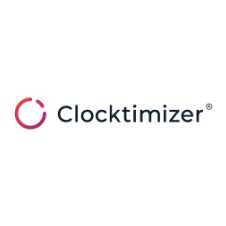Clocktimizer: Why operational excellence is more than just the latest legal buzzword
Operational excellence. Attendees of this year’s legal(tech) conference circuit will be no stranger to the term. It has become the new holy grail of both in-house counsel and their law firm counterparts. Put simply, it is the desire to get work done faster, smarter and more efficiently. No wonder, then, that clients are increasingly demanding operational excellence from their external counsel. However promising, and actually delivering operational excellence are two different things. So why should firms care about the latest buzzword? And having decided to pursue operational excellence, what are best practices for implementation?
The significance of operational excellence
As we explained, operational excellence is about working faster, smarter and more efficiently. As Rose Ors describes;
“In the context of providing legal services, operational excellence transforms the fluid practice of law approach to a nuts-and-bolts business of law model. How? By instituting a way of operating that deploys people, process and technology to produce high-quality legal work at lower and more predictable costs to the client.”
Rose Ors, Legal Executive Institute
It is essential for law firms because, in the era of AFAs, it reduces overspend, automates repetitive tasks and improves client relationships. By reducing legal waste (i.e. anything the client is not willing to pay for) law firms can work in the most efficient way. They can also deliver a product on budget, which exactly fits the requirements as set out by the client.
So what is legal waste?
Within a manufacturing context, waste within a process or system can be broken down into four main categories:
When there is wait time between processes
When there is unnecessary human motion
When mistakes occur that require rework
When excess inventory is stored for long periods of time
This is no different in the context of legal services. Legal waste is anything that does not add value to the client under an hourly billing model, or that undermines a law firm’s profit in a fixed or flat-fee model. Our friends at Baker Donelson provide and excellent breakdown of many of the ways which this can manifest in a matter. However, in short they include overstaffing, assigning the wrong resource, performing unnecessary tasks and under-utilising the team’s capabilities.
It is not difficult to understand, then, the significance of operational excellence. Most RfPs nowadays include questions on a firm’s use of Knowledge Management (KM) and Project Management (PM) for this very reason. It benefits the client by streamlining and focusing legal work. It benefits the firm by reducing waste and inefficiencies and therefore increasing profitability.
Best practices for operational excellence
It is all well and good discussing why a firm should pursue operational excellence. But here at Clocktimizer, we are practical people. So we have collected the advice of a number of clients to explain how to go about achieving it. The first, and most important step, is to implement a strong system of Project Management (PM). For full tips on implementing PM, read our interview with Katja van Kranenburg of CMS. In short, you must “implement techniques to clarify expectations with the client as to scope, cost and communications; and use that information to proactively manage and control the matter.” Tools like Clocktimizer can streamline this process by helping build and then manage budgets to each matter’s specifications.
Having implemented a (successful) system of Project Management, step 2 is to remove the waste in the system. This can ultimately be called Process Improvement. To do this you must “conduct a thorough evaluation of repetitive processes to remove waste, reduce cycle time and, ultimately, reduce cost”. Again, tools like Clocktimizer will allow you to identify repetitive tasks. It can also allow you to compare processes before and after improvements to measure their relative success.Finally, step 3 looks to use data analysis to complete the cycle. This is the most complex of the stages and involves first capturing large amounts of data. This includes time card data, like that found in Clocktimizer, but can extend to client satisfaction data, complex financial data or even courtroom data. By capturing and analysing this information together “it is possible to evaluate statistical trends, variables and anomalies. The purpose is to evaluate and control the process and identify opportunities for continued improvements.”
Continuing the cycle
Operational excellence is a constantly evolving target. Sadly, there is no magic button you can press and then forget about. It is about constantly evaluating, identifying efficiencies (be that through new processes or new technology) and testing them to determine whether they reduce waste in your system. It requires a permanent feedback loop and tools which can aid in this task. It is also one of the defining reasons why we, at Clocktimizer, exist. To learn more about how our platform can support (and guide) operational excellence at your firm, get in touch or book a demo with us directly.



